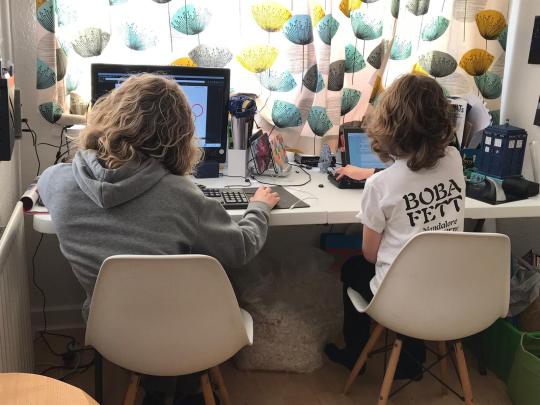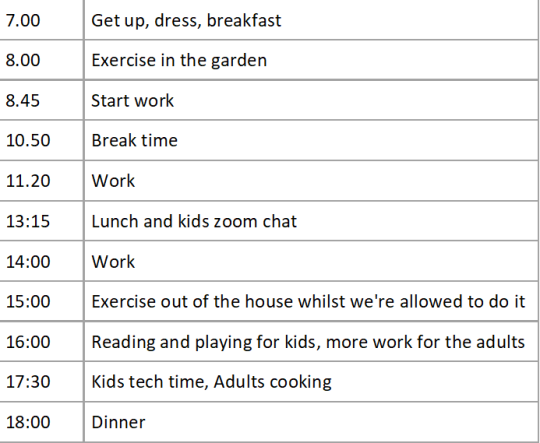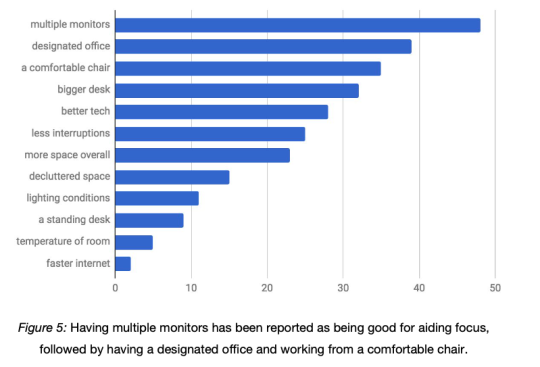Home » Posts tagged 'Crowdwork'
Tag Archives: Crowdwork
What crowdworkers can teach us about working at home
As schools across the UK closed their doors on Friday families focused on how they were going to create a coworking space at home. They spent their weekend moving furniture, clearing out spare rooms, refinding extension cable usually reserved for the xmas tree lights so as to create a new home office that could fit the whole family. We are fortunate enough to have a small extension that is open plan to our dining room that we can fit 3 of us into and we’ve squeezed an extra deskspace on the edge of the dining room so that we each have our own place to work.

My new coworkers include a teen, a tween who are used to spending their days at school and doing a bit of homework at the end of the day. The fourth member of our team is a middle-aged man who is used to getting most of his ‘deep-work’ done in the office, and only using home for catching up on email. None of them are happy to be here! I, on the other hand, am used to having the place to myself to get on with ‘deep work’ and use my office for face to face meetings. I’ve been working at home for at least a day a week (usually more) for the last 16 years, first motivated by avoiding the crazy costs of commuting into London and then to facilitate the juggling of school pick-ups that comes with family life.
Our new normal means scheduling our day around the timetable of a secondary school. They’re encouraging the teen to do the work set during standard lesson time and of course that’s completely necessary for live online lessons. The tween is doing a fantastic job of following the lesson plans that have been emailed over by his teacher this morning. And I’ve realised that this timetable isn’t that different that one I followed on a writing retreat last year so this might actually work well for all of us. I don’t often take a 20 minute break in the middle of my morning but it was lovely to stand out on the patio in the sunshine whilst having a cup of tea.

We all have different needs in this space. Two of us have online meetings with work colleagues and students, as well as video lectures to record. The teen is in the middle of an online lesson in google meets as I type – it seems that he doesn’t have to say anything (thank goodness) but I can still just about hear the teacher’s voice from his headphones. Being physically all in the same space isn’t going to work for all hours of the day so meetings and lecture recordings are going to have to be made from bedrooms. Connecting socially online is also important now we are distancing ourselves physically from everyone else and the kids need time to talk to their friends so we’ve set up daily meetings for them with online conferencing software so that they can hang out together.
We’re also trying to follow the WHO guidelines that state that children and youth aged 5–17 should accumulate at least 60 minutes of moderate- to vigorous-intensity physical activity daily https://www.who.int/dietphysicalactivity/factsheet_young_people/en/ Walks and runs around our local streets and park involve taking swerving routes away from people who don’t seem to have worked out that moving into single file when you are coming face to face with someone is probably a good idea! Yesterday a group stopped still as they saw us coming towards them – all 4 of them stood side by side across the path!
In this new coworking world, the research I’ve been doing with my PhD student Laura Lascau into the environments in which remote crowdworkers do their work has taken on new personal significance. There are many parallels between the challenges experienced by crowdworkers and those that many families will find themselves facing this week and I’ve tried to take on board what we have learnt when designing our new coworking arrangements. In the rest of this post I’ll summarise some of the findings from a paper we published last year and what we can learn from them:
Laura Lascau, Sandy J. J. Gould, Anna L. Cox, Elizaveta Karmannaya, and Duncan P. Brumby. 2019. Monotasking or Multitasking: Designing for Crowdworkers’ Preferences. In Proceedings of the 2019 CHI Conference on Human Factors in Computing Systems (CHI ’19). Association for Computing Machinery, New York, NY, USA, Paper 419, 1–14. DOI:https://doi.org/10.1145/3290605.3300649 (The full paper is available open access here https://discovery.ucl.ac.uk/id/eprint/10066164/1/1.%20monotasking-multitasking-CHI2019.pdf )
We surveyed people who work from home regularly about what works for them and have been able to extract some helpful tips for others that find themselves in this situation now.
Making an office space
What changes would crowdworkers make to their spaces? Here are the top 4 things that they felt would improve their home work space.
- multiple monitors – our participants were clear that having multiple monitors would help them to get their work done more easily rather than working only from a small screen.
- have designated office spaces – they were also big fans of having a designated office space to work in. We pick up on this below when considering working around other people
- more comfortable chairs – having to made do with a corner of the sofa, or someone’s bed as a workspace was common. Having a comfortable chair was see
- larger desks – having a space to lay out everything they needed to complete their work was important

Working around other people
What are the most common challenges to focusing on work at home?
- presence of other people
- having the TV on
- pets
- digital distractions
About 40% of our participants worked from a shared space and struggled with integrating their demands of the different types of work they do with the constraints of their physical environment. As one of our participants told us:
“I would first and foremost move it into a private room. I miss out on numerous [jobs] because I am unable to record audio or video due to the fact others are making noise around me or would be in the webcam video. It also provides many distractions since it’s in the front room. A personal private room would be the best upgrade.”
Tip: Find out from everyone what kinds of activities they need to do in their day in order to identify what kind of spaces you need. Are you able to provide everyone with their own working space? If not, do you need a quiet working space for those doing ‘deep work’ and another place where people can have online meetings? Is this going to work every day or do you need to agree to rotate around? Check in frequently with each other to make sure everyone is getting the type of space they need.
Managing distractions
What helps workers focus on their work?
- quiet spaces,
- limited distractions,
- background entertainment (mainly listening to music)
Our participants told us about the strategies they use to manage distractions that come from other people:
“I use noise cancelling headphones. I tune out environmental noises or activities. I remain focused on what I’m doing. I do not engage in more than one activity at a time unless the [the work] require me to do so. I do not eat or listen to music while I work. I tend to work when the environment is calm rather than when I know those around me will be active.”
“I try to work during times I know the kids are being independent or napping.”
Tips: Sharing your work space with people who are prone to interrupt you is always difficult. Agreeing on a daily schedule that everyone agrees to might be helpful for helping to plan when you’re going get your work done. Remember that everyone feels that their own work is important so you can’t have one person dominating the way the space is being used. There’s going to have to be a lot of compromise.
If you have young children then talk to them about what they can be doing whilst you get on with your work. Some children can get lost in a book or happily play for hours with their toys. Most children can be occupied by tv or digital games. If you can, stick on some headphones and power through! Perhaps young children could be entertained by grandparents through videoconferencing software – they could read stories to them, or have a chat.
Work-life boundary management and leisure time
People vary in terms of how they tend to manage their work-life boundaries. Some people prioritise work, others non-work, and some try to do both. People also vary in terms of how separate they like to keep these parts of their lives: ‘integrators’ are happy switching frequently between one and the other, perhaps to the point where these doesn’t seem to be a boundary at all. ‘Separators’ like to keep them completely separate and wouldn’t ever contemplate working at home or at the weekend.
It won’t come as a great surprise to know that we saw that people who work from shared spaces such as family homes experience a far greater number of interruptions from personal matters when they were trying to work than those who were working from private spaces.
Tips: If you or your partner are separators then recognise that you’re likely to find this new co-working environment challenging and that it will take time to adapt to it. Again a schedule can be helpful here so that you block time for work and time for non-work. Remember to schedule non-work activities whether that’s time with friends, taking part in an online “pub” quiz or one of the many online exercise classes that have suddenly appeared.

